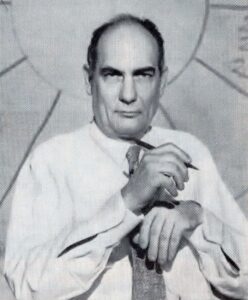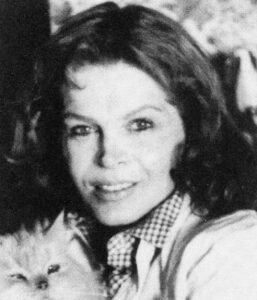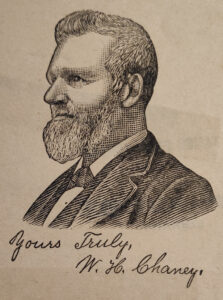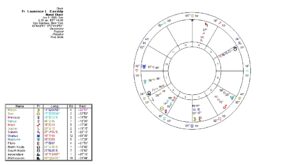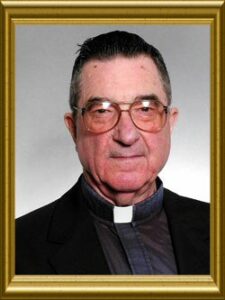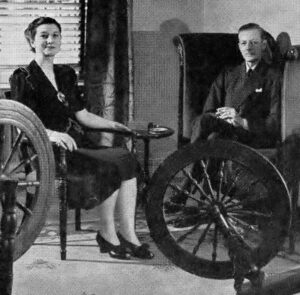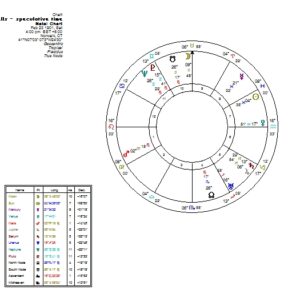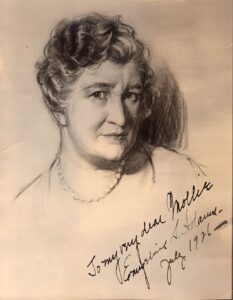Since the Astrologer’s Memorial is no longer being maintained, I wanted to post some of the tributes I wrote for it. First up is on Ed Dearborn, who founded the Declinations SIG and spent most of his life studying astrology.
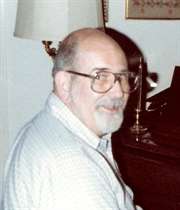 Astrological historian, writer and advocate Edward L. Dearborn was born on May 3, 1922 at 5:27 AM in Meadville, Pennsylvania and passed over on August 18, 2012. He was a school guidance counselor and devoted to his wife and family. A lifetime student of astrology, he chose to pursue it as a sideline until his retirement in 1985, when he had more time for research and writing. Ed was an incredibly supportive friend and colleague, and astrologers across the country and around the world benefited from his dedication and commitment to astrology.
Astrological historian, writer and advocate Edward L. Dearborn was born on May 3, 1922 at 5:27 AM in Meadville, Pennsylvania and passed over on August 18, 2012. He was a school guidance counselor and devoted to his wife and family. A lifetime student of astrology, he chose to pursue it as a sideline until his retirement in 1985, when he had more time for research and writing. Ed was an incredibly supportive friend and colleague, and astrologers across the country and around the world benefited from his dedication and commitment to astrology.
With both the Moon in Cancer and Neptune in Leo in his fourth house, he had an unusual upbringing. Ed met his future wife (a neighbor) when he was only five or six years old and in exemplary Taurean fashion was true to her throughout his life. His six-year-old brother died in 1930 and his parents divorced the following year. Yet since both of his parents eventually remarried twice, he never lacked close family members nearby, sometimes living on the same block.
Ed Dearborn began studying astrology before he turned 17. He never mentioned any personal tutoring and I always assumed he was self-taught. He was a voracious reader who collected an extensive astrological library and subscribed to most astrological periodicals in the U.S. and several abroad as well.
After high school, Ed enrolled at local Allegheny College, but was put on probation for poor grades. He also had difficulty paying the $250 a semester tuition. He decided, instead, to enlist in the Marines in 1941. Ed felt that he “cheated” to get in as he’d nearly broken both feet in jumping off a four-foot wooden horse at the age of eight and thereafter had regular issues with his feet. However he managed to pass the physical and was careful throughout World War II.
Ed was assigned to a Northern California home guard unit and served as a communications officer in the Signal Corps, where he was primarily responsible for radio equipment and repairs. He was called to duty in the Aleutian Islands conflict in August of 1943 on Kiska Island, Alaska, and also spent time in Hawaii, the Marshall Islands and Guam. He said that he carried a 1939 edition of Llewellyn George’s A to Z Horoscope Maker and Delineator across the Pacific theater. In his last years, Ed returned again and again to memories of his war years, and participated in a Federal oral history project to preserve them.
After the war, Dearborn went back to Pennsylvania and worked in a wire factory, taking a vacation in 1946 to attend the AFA convention in Columbus, Ohio. Ed was enthralled by the numerous astrologers he joined there, many of whom were nationally prominent or had written books and articles he’d read.
At the banquet Ed sat with the New York delegation, including Marion Meyer Drew (1889-1974), the first editor of Horoscope magazine. A Sagittarius, she’d been married to Sidney K. Bennett (Wynn) and was then writing a daily column for the New York Daily News. Fellow Taurus Elizabeth Aldrich (1875-1948), once publisher of the New York Astrologer and a prominent mundane astrologer, was also there, as were Marc Edmund Jones (working on his Ph.D. in theology at Columbia University), and Mabel Leslie Fleisher, President of the Astrologer’s Guild of America, who also held a law degree, unusual for a woman at that time. Ed Dearborn had, at the age of 24, found his way to some of the most accomplished astrologers in the country.
Marion Meyer Drew needed help around her house in Cold Spring, New York, and talked Ed into staying with her and returning to college. In August of 1946 he quit his job in Meadville and moved to Cold Spring. In exchange for room and board, Ed served as driver, gardener and handyman as well as an assistant for Marion’s newspaper column. He drove her to the city to attend Guild meetings, and afterwards a dozen or so from the group would head to Schraft’s restaurant for refreshments and further discussions.
Ed took psychology classes on the G.I. Bill at Washington Square College (NYU) for the two years he remained in New York. He was able to focus on his studies and did much better than before. He explored Weiser’s bookstore downtown, stocked with older authors that he’d never seen before, like Dr. Luke D. Broughton, A.J. Pearce and W.J. Simmonite.
He also became better acquainted with Elizabeth Aldrich, a close friend of Marion’s. Aldrich had been diagnosed with cancer and was ill by Christmas of 1947, and Ed visited her many times in the hospital before she died in early 1948. Aldrich had made Ed the executor of her will and he cleaned out her office and living space in her Carnegie Hall loft, saving most of her notes and correspondence while taking his college exams. In the fall of 1948 he returned to Pennsylvania and continued his studies.
Ed was finally able to marry Mary Jane Watkins on August 17, 1948 and they had two daughters. Jane was a double Gemini with Scorpio rising, but despite her Jupiter in Cancer, had what Ed described as a “no clutter” attitude – quite at odds with his own instincts to hold onto anything astrological that came his way. To hear Ed tell it, though, this appeared to be the only meaningful conflict in their 62 years together! He described her as “an angel on earth.”
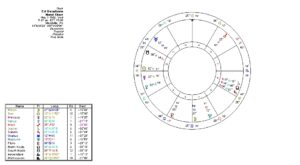 Dearborn received an AB from Allegheny College and his Master’s degree from Ohio State University in 1956. His Jupiter and Saturn in Libra in his 6th house suited him well for intellectual service. Over the course of a long and varied career, he taught American history and science to many school grades. Ed served as the principal of a correctional school for girls, in work-release programs, and was involved as a vocational/technical liaison counselor in a cooperative educational program where students spent half a day at school and half on the job. Ed also taught a few beginning astrology classes over the years. He eventually reached his original goal of becoming a high school guidance counselor in 1961, and settled in Norwood, Pennsylvania in 1965.
Dearborn received an AB from Allegheny College and his Master’s degree from Ohio State University in 1956. His Jupiter and Saturn in Libra in his 6th house suited him well for intellectual service. Over the course of a long and varied career, he taught American history and science to many school grades. Ed served as the principal of a correctional school for girls, in work-release programs, and was involved as a vocational/technical liaison counselor in a cooperative educational program where students spent half a day at school and half on the job. Ed also taught a few beginning astrology classes over the years. He eventually reached his original goal of becoming a high school guidance counselor in 1961, and settled in Norwood, Pennsylvania in 1965.
Ed’s personal experience, as well as his years of teaching and counseling, led him to fervently believe that education was a key ingredient in reaching one’s goals. Having worked in the wire factory for over three years, he could see how factory workers typically became boxed into a corner with financial commitments to families, cars and homes. He anticipated the real estate crisis and mortgage defaults by at least six years, if not astrologically then certainly through his good sense as well as a keen ability to foresee the results of actions and events (Sun and Mercury rising in Taurus; Saturn exalted in Libra in an out-of-sign square to Mars). Ed saw no good in folks with few options outside their factory jobs getting mortgages with less than 5% down, and he was right.
I first met Ed in 1993 when he wrote to request what he called “Astro-Morsels” from me – basically a personal history and experiences in the world of astrology. Countless other astrologers initially encountered him in just the same way. He had a wide correspondence and was determined to put together the history of astrology in the U.S., piece by piece. And he was persistent. My mom, who considered it a chore to write anything down, received repeated queries from him until in exasperation she finally wrote her own astrological story for Ed (which was much more substantive than the fragments she’d shared with me before).
Ed was a wonderful correspondent. In the ‘90s he used to send photocopies of cartoons and gags from newspapers (often poking fun at scientists and politicians), accompanied by neatly handwritten letters in which he answered questions and shared the books and articles he’d recently read, the lectures he’d seen and his most recent research – a typically Libran give-and-take. By the time I knew him, he had accumulated so much data on index cards that he could quickly provide information about most any astrologer in the last century – their publications, location, teachers and areas of expertise. His thousands of Astro-Morsels had indeed added up to a monumental collection that was extraordinary in its scope. Ed created histories of astrological groups and continued collecting astrology periodicals and books, often buying a second copy to lend to friends. In 1995, at the age of 73, he took typing and computer classes, bought himself a computer and determined to transfer all of the information to disk. Ed took the advice that he’d shared with students: “The skills you are being pressed to learn are some you are going to need before long. If you approach them enthusiastically you will be amply rewarded.”
Ed had a tremendous vitality well into his senior years. He kept in touch with many astrologers, was quite involved with his extended family (including aged step-parents and great-grandchildren), was an active member of his local NCGR Greater Delaware Valley astrological group, and took care of his home. With Venus rising in Gemini, he had many talents, and his abilities in a wide variety of areas could be astonishing. He once told me about making improvements to a vacation home, and it soon became apparent that he had not only installed much of the electrics, new plumbing and a complete septic system, but also handled the carpentry of major structural changes, all on his own.
Despite this he was always modest about his abilities. In his later years when his hearing had deteriorated, he’d apologize for “running on” on the phone. He never considered himself a professional or full-time astrologer and in fact never appeared to have charged a fee for a chart reading; he did not feel confident at interpretation. Although he kept his astrology and work lives separate, I always assumed that he’d used astrology to counsel several generations of children and young adults to find their true paths in life. His conviction in the usefulness of astrology was admirable; I’ve known few others who utilized it as such an integral part of their lives over such a long period of time.
With the Sun rising and the Moon in the 4th house, Ed Dearborn studied his own chart throughout his life and would share how astrological aspects impacted him personally. He was a regular contributor to the Mercury Hour and AFA’s Today’s Astrologer, and was published in astrology journals in the U.S. and overseas. He tirelessly worked and reworked his articles, most recently those on quincunxes and yods; the springboard for these pieces were yods in his own birth chart. His interest in the new body Sedna was due to its discovery within a day of the birth of his fifth great-grandchild.
Ed’s interest in declination was sparked by consideration of Mars in Sagittarius in his 8th house placed Out of Bounds, which he felt left him lacking an ordinary sense of fear (something which concerned him and forced him toward greater self-control). He was influenced by Kt Boehrer’s book, Declination: The Other Dimension (1994), and went on to organize and found the NCGR’s Declination SIG in 1996. Ed received NCGR’s Sisyphus award in 1998 for this accomplishment. What a marvelous metaphor for someone who’d worked so hard for so long toward all of his achievements!
Ed felt that astrology was more tangible and reliable than other occult arts and shared his belief that, “Relying on clairvoyance seems to me like walking on thin ice – just how thick is it?” He had a strong mind but was not overtly opinionated; he just kept learning and retained a good sense of humor.
Ed’s other interests included political astrology, cycles, horary, the asteroids and new bodies. He enjoyed gardening, traveling and music. In his later years he became more interested in spirituality. During one notable class on angels, the instructor suffered a heart attack yet survived, due, they all concluded, to the intercession of the course’s subject!
Ed Dearborn was a gentle soul with a tremendous spirit. He was a true Venusian, yet he could be tough as well. I called him one day and teased him as he answered the phone. He did not recognize my voice and sternly demanded, “Who IS this?!!” Then I understood why he’d been successful as both a Marine and the head of a juvenile delinquency program: he had a lot of strength.
Many years ago he informed me that he’d studied his chart and concluded he’d be around until the age of 91 or 92 as I recall. He was overweight and wheezing at the time and I wasn’t sure he could be correct. But he came close – making it to 90 and well past his third Saturn return. He was not one to complain about any of the health issues, aches and pains that accompany old age, taking each day as an opportunity to live life fully. He once wrote that, “’Tis easier to face life when I kind of roll with the punches and recognize that not one of us knows what Our Creator intends.” That was Ed: always patiently committed.
I know it was difficult for him to see his wife Jane through her cancer diagnosis and final illnesses (she predeceased him by about three years). He remained touchingly dedicated to her, searching for the proper holistic remedy to lessen her pain and speaking with more than a little pride about taking care of her – he seemed to consider it a privilege rather than a duty.
Ed Dearborn was like the grandfather I never knew. I think he must have known how much we all loved him and needed him in our astrological lives. Giving to others was second nature to him. He shared his optimism, spirit and gifts with us all, without reserve. We miss you, Ed! We hope we’ll see you again.
Some of Edward L. Dearborn’s articles are:
“The Inconjunct, the Quincunx and Yods” The Mountain Astrologer, August-September 2006
“Ramifications of the Quincunx” Considerations Volume XVIII, No. 2 (2003)
“Planetary Cycle Charts” The Mountain Astrologer, August 1998
“My Recollections of the 1946 AFA Convention” AFA Convention Program, 1996
“Astro Periodicals List” The Mountain Astrologer, August 1991
Many thanks to Joan Aldrich and Lois Livermore who helped with this piece.
Some of the Astrologers’ Memorial still lives on the Internet Archive, though without posts from more recent years.
 I always feel that Evangeline Adams introduced me to genealogy. Her Pluto conjoined my Moon, and as I researched her life, I uncovered many government and church records that provided key information about her. After that, I more easily researched other families as well as my own. Pluto unearths things and can be relentless in its action. It kept me focused on genealogy research for a long time.
I always feel that Evangeline Adams introduced me to genealogy. Her Pluto conjoined my Moon, and as I researched her life, I uncovered many government and church records that provided key information about her. After that, I more easily researched other families as well as my own. Pluto unearths things and can be relentless in its action. It kept me focused on genealogy research for a long time.


